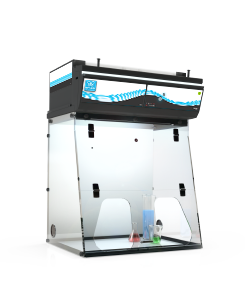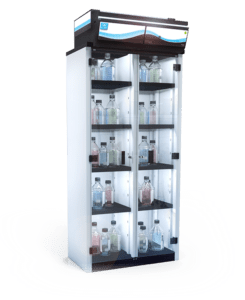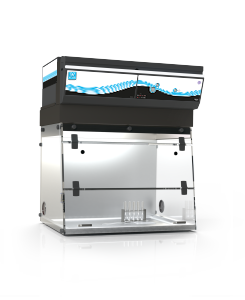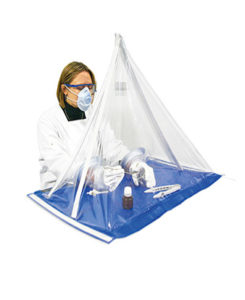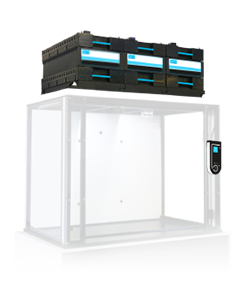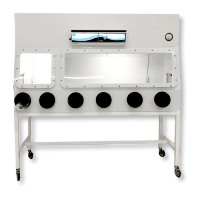Two of the most widely used chemicals within the fields of histology and pathology are xylene and formaldehyde, both toxic agents harmful to technicians’ health when overexposed.* Xylene is used for tissue processing, staining and coverslipping specimens to be examined under a microscope. Formaldehyde is a commonly used, strong-smelling gas used primarily in medical labs and mortuaries, however, although this colorless gas is also pervasive in many common products such as particle board, glues, permanent press fabrics, product coatings, fiberboard, and plywood, to name a few, it is being inhaled daily by laboratory technicians in dangerous concentrations.
Airborne concentrations of both xylene and formaldehyde can cause serious respiratory and skin irritations and when users are exposed to over 100 ppm they become classified as Immediately Dangerous to Life and Health (IDLH). As a matter of fact, OSHA considers 20ppm of formaldehyde to be IDLH.
Dangers of xylene on the nervous system and other organs
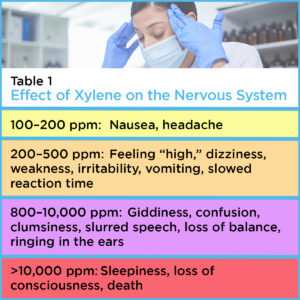
Examining xylene, a deceptively pleasant, scented hydrocarbon, we find it widely used in industry and medical technology as a solvent. Also referred to as dimethyl benzene, it is found in small amounts in airplane fuel, and cigarette smoke as well as in dental histology labs for processing tissue, staining, and endodontic retreatments as a latex solvent. In the laboratory world, histopathological technicians’ daily exposure to xylene-contaminated solvents poses a dangerously high health risk. Xylene is such a dominant risk that OSHA has strict regulations concerning exposure and limiting the work shifts of those employing it in their routines. During a work shift, for example, the limit of exposure to xylene is 100 ppm in an eight-hour time-weighted average (TWA).
Xylene easily evaporates into harmful elements mixing with the air that is breathed and if that air is not contained and cleaned, technicians are exposed via inhalation, ingestion, or eye and skin contact. At this point, the inhaled xylene can cause acute and chronic health effects, with the worst damage occurring to the central nervous system where symptoms include headache, nausea, vomiting, and dizziness. Although the serious effects of xylene increase over time, it is possible to reverse the effects with proper air ventilation and fume-proof storage. This table shows the effects of xylene on the nervous system.
Long-term exposure can result in a condition known as ‘organic solvent syndrome.’ Other organs affected can be the eyes, nose, throat, lungs, liver, kidney, gastrointestinal tract, and skin.
Source: ncbi.nlm.nih.gov
The Facts on Formaldehyde
Unlike the pleasant odor emitted from Xylene, Formaldehyde is a strong-smelling gas found in water-based solutions. Also described by the term ‘formalin’ meaning a saturated solution of formaldehyde that is dissolved in water. The disinfectant effects of formalin are supplied by the formaldehyde component. The current PEL (permissible exposure limit) for formaldehyde in the workplace is 0.75 parts per million parts of air (0.75 ppm) considering an eight-hour average of exposure.
Because formaldehyde is a colorless gas, workers will not be able to see it being inhaled but it can also be absorbed through the skin, either way, respiratory issues like asthma and dermatitis can develop. OSHA considers any concentrations of 100 ppm at an IDLH (immediately dangerous to life and health) risk. One of the biggest concerns in the workplace is the inhalation of formaldehyde among healthcare professionals and medical lab technicians and those handling biological specimens in the high-risk category. OSHA classifies formaldehyde as “a sensitizing agent that can cause an immune system response and is a cancer hazard.”
Preventative Measures
While safety measures should be in place in all labs and workspaces it is recommended that extra measures above the PEL standard be applied beyond compliance due to the unknowns of ventilation, air circulation, lack of administrative controls, and human error.
Recommended measures for a safer, healthier, sustainable work environment include:
- Substitution ( when possible with a substance that can perform the same function and not create additional hazards)
- Local Exhaust Ventilation (Modifying workplace to reduce inhalation hazards, ex. ductless fume hood and ceiling mounted air filtration systems will remove contaminates without exhausting noxious chemicals to the outside air)
- PPE (Proper Protective Equipment and clothing to reduce the number of hazardous chemicals absorbed after exposure and prevent toxic chemicals from being carried home)
For more information regarding assistance in insuring safety and sustainability beyond compliance PELs in your Lab, contact Jesse Coiro 800-964-4434 or jcoiro@erlab.com.



